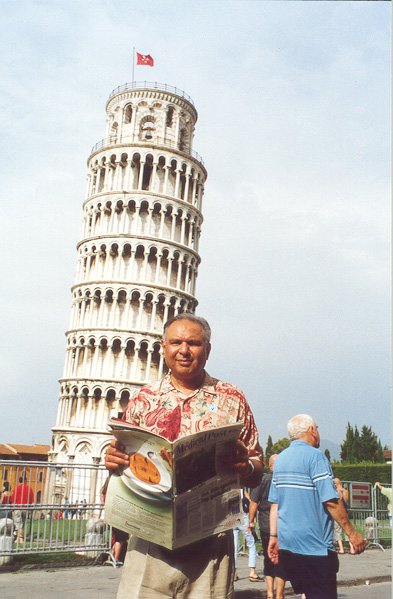You see a doctor for a medical problem. He advises you to follow certain treatment. Do you ever ask him: Doctor, is there any scientific evidence to show that this treatment works?
Most of us trust our doctor and are too polite to ask him such a question. Instead we rely on our neighbors, friends and families to give us a second and a third opinion.
Those who are computer literate surf the internet. But you know what happens there there are thousands of references to search for an answer.
What do doctors do when they are looking for best evidence in their practice?
Doctors go back to their text books, read medical journals, talk to their colleagues, have case conferences in hospital or attend medical meetings at exotic places.
My surgical associate, Dr. Brzezinski and I just got back from Montego Bay, Jamaica where we attended a two day conference on Evidence Based Medicine in Gastroenterology.
It was a very interesting conference. The location was beautiful an ideal environment to learn something! The warm ocean breeze, carrying important scientific knowledge, penetrates your brain without difficulty!
There were experts from Europe, Canada and Jamaica. Main discussion was on the problems of the esophagus and stomach.
As I have said many times here, medicine is an imperfect science. Quite often the practice of medicine is an art than science. And the discussion at the Jamaican conference again confirmed that.
Only about 10 to 20 percent of what we do in medicine is evidence based. That means it is scientifically proven. The rest is based on what each one of us think is correct, what we think is best for a particular patient, it is economical and safe.
The advantage of evidence based medicine is that it helps optimize patient care and minimize variation in best practice.
The problem is that in most cases there is not enough evidence available. The clinical decision making is a very complex process because no two patients respond to a treatment in exactly the same manner.
Therefore, evidence based medicine in clinical practice is quite often not relevant.
But in spite of imperfections in medical practice, we continue to treat hundreds and thousands of patients each day. Most of them do well and respond to treatment.
Some get better just by talking to a sympathetic doctor.
Some get better by taking an aspirin and going to bed.
Some get better by doing nothing may be a shot of brandy. Or Jamaican style dont worry, be happy.
Some get better by following the principles of ELMOSS exercise, laughter, meditation, organic/healthy food, stress relief, and by giving up smoking.
But eventually, most people do get better. Time is a good healer unless you are suffering from an incurable disease.
So, medicine is not a rocket science. But you have to know the human anatomy, physiology, pharmacology, and pathology. Then you have to put all this knowledge together and pass few exams. Then you can call yourself a doctor of medicine and surgery!
Isnt that easy? It just takes 10 to 15 years of your life. Then you start practice and find out that only 20 percent of what you practice is based on pure science! But you can say – I have been to Jamaica!
Seriously next time you are sick well see your doctor first!
Start reading the preview of my book A Doctor's Journey for free on Amazon. Available on Kindle for $2.99!
